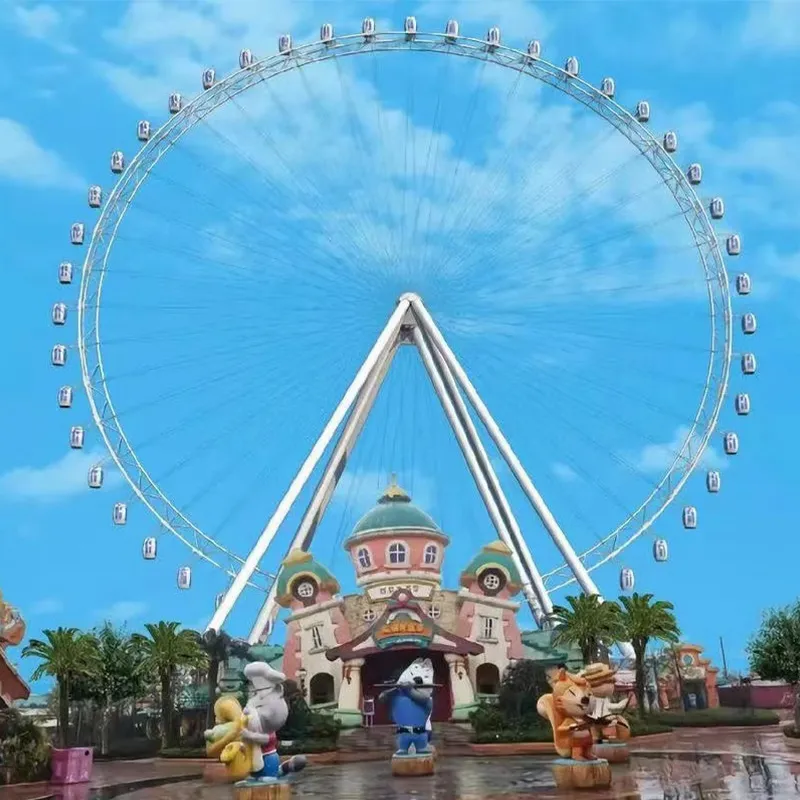- Albanian
- Arabic
- Belarusian
- Bengali
- Czech
- English
- French
- German
- Hebrew
- Hungarian
- Indonesian
- irish
- Italian
- Japanese
- kazakh
- Persian
- Russian
- Thai
- Uzbek
- Vietnamese
the first roller coaster
The First Roller Coaster A Journey Through History
Roller coasters are a staple of amusement parks around the world, known for their thrilling drops, twisting loops, and high-speed thrills. However, the history of roller coasters stretches back several centuries, with the first roller coaster paving the way for the adrenaline-pumping rides we enjoy today. The story of the initial roller coaster is not just about engineering feats; it is a reflection of social change, innovation, and the pursuit of entertainment.
The earliest form of a roller coaster can be traced back to Russia in the 17th century, where large wooden structures known as drop slides or ice slides were built. These slides were essentially ramps of ice that allowed riders to slide down at incredible speeds. The most famous of these was located in the gardens of Empress Catherine the Great, and it provided a thrilling experience as riders descended from heights of over 70 feet. While these early prototypes were not roller coasters in the modern sense, they laid the groundwork for what was to come.
The concept of the roller coaster evolved significantly during the 18th century, particularly in France. In the mid-1800s, the Montagnes Russes (Russian Mountains) opened in Paris. This ride was an adapted version of the Russian ice slides but featured wooden tracks, which allowed for a more controlled ride experience. The popularity of the Montagnes Russes sparked a new wave of interest in amusement parks and mechanical rides throughout Europe and America. The wooden roller coasters began to feature simple hills, dips, and turns, capturing the imagination of the public.
By the late 19th century, advancements in engineering and manufacturing meant that roller coasters could be constructed on a larger scale. In 1884, the first roller coaster with a track was built at Coney Island in New York City, called the Switchback Railway. Designed by LaMarcus Adna Thompson, the Switchback Railway was a groundbreaking attraction that drew enormous crowds. Riders were transported up a height of 50 feet and then transported back down in a series of gentle hills. It wasn’t steep or fast by today’s standards, but it set the stage for future developments in the amusement industry.
the first roller coaster

As the 20th century unfolded, roller coasters rapidly evolved into the high-speed thrill machines we know and love today. Innovations such as steel tracks, which allowed for smoother rides, and the introduction of inversions made roller coasters ever more thrilling. The first looping roller coaster, Flip-Flap Railway, opened in 1895, featuring a vertical loop that sent riders upside down for the first time. As technology advanced, roller coasters became increasingly complex, with multiple loops, corkscrews, and even zero-gravity rolls.
The roller coaster phenomenon extended beyond just the rides themselves; it inspired a cultural movement. Roller coasters became symbols of freedom, excitement, and the advent of leisure time in society. Amusement parks flourished, and communities rallied around these attractions, marking a significant change in recreational activities for the general public.
Today, roller coasters are among the most sought-after attractions in theme parks. From the terrifying heights of Kingda Ka to the complex twists of Steel Vengeance, modern roller coasters push the limits of design and engineering. The heritage of the first roller coaster is still felt in today’s rides, reflecting over two centuries of innovation, excitement, and the timeless excitement of experiencing thrill rides.
In conclusion, the first roller coaster was not just a simple amusement ride; it represented a transformation in entertainment history. It was the beginning of a legacy that would shape the future of amusement parks and continue to thrill generations to come. The evolution of roller coasters tells a story of human creativity and our constant desire for adventure—something that remains as relevant today as it was centuries ago.
-
Flume Ride-Hebei Zhipao Amusement Equipment Manufacturing Co., Ltd.|Thrilling Water Attraction&Customizable DesignJul.30,2025
-
Flume Ride - Hebei Zhipao Amusement Equipment | Water Coaster, Thrilling DescentJul.30,2025
-
Flume Ride - Hebei Zhipao | Thrilling Water AttractionJul.30,2025
-
Flume Ride: Thrilling Water Attraction by Hebei Zhipao|Log Flume Manufacturers&Flume Ride DesignJul.30,2025
-
Flume Ride-Hebei Zhipao Amusement Equipment Manufacturing Co., Ltd.|Thrilling Water Coaster, Safe DesignJul.30,2025
-
Flume Ride-Hebei Zhipao Amusement Equipment Manufacturing Co., Ltd.|Thrilling Water Attraction, Safe DesignJul.30,2025
